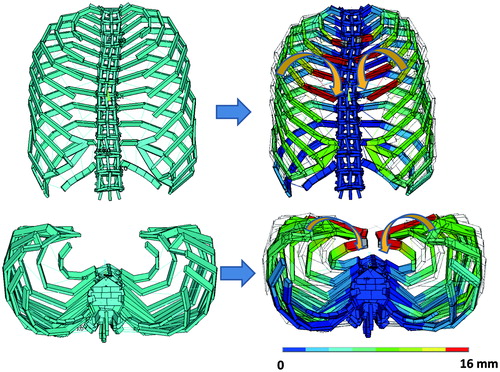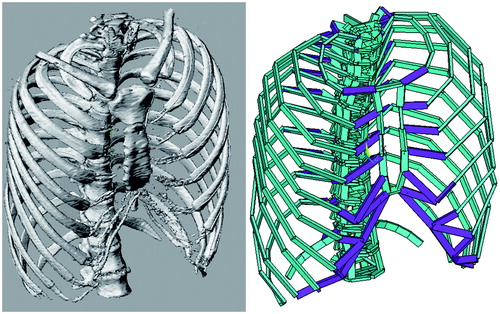Figures & data
Figure 1. Basic principles of the methods. (A) Each rib is modeled as a U-shaped object that has hinges on both ends. (B) To model bilateral sides of the thorax, the U-shaped object is placed in rows. (C) Bilateral rows are connected with a plate that simulates the sternum. (D) A model simulating a thorax that has a partial defect of the sternum.
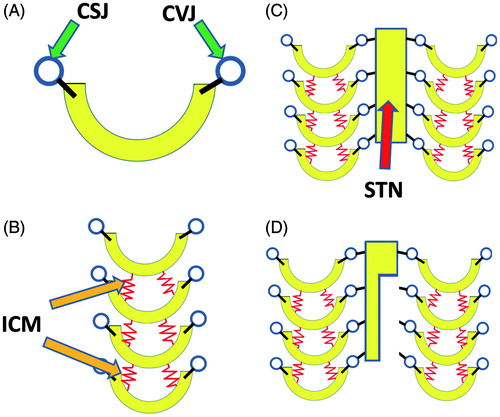
Table I. Stress–strain relationship in nonlinear springs simulating respiratory muscles.
Figure 3. Three-dimensional finite element models representing the normal and six defect type thoraces created based on the normal type model.
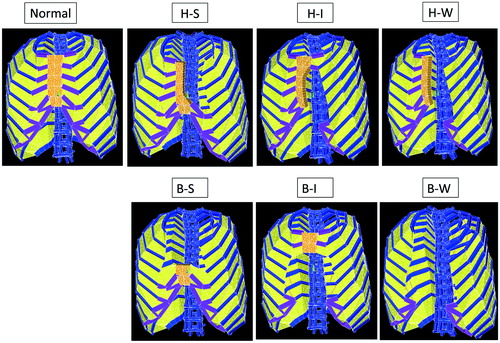
Figure 4. Transformation of thorax models at the respiratory phase. The scale indicates the degree of movement.
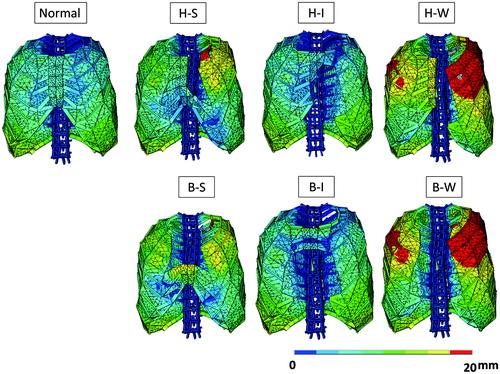
Table II. Respiratory function: ranges and averages (in the parentheses).
Figure 5. The abnormal transformation pattern thoraces with whole-length sternum defects present on inspiration. The ribs move inward like a person’s arms in hugging another person. This disorder pattern was named “hugging disorder”. The scale indicates the degree of movement in the posterior direction.
